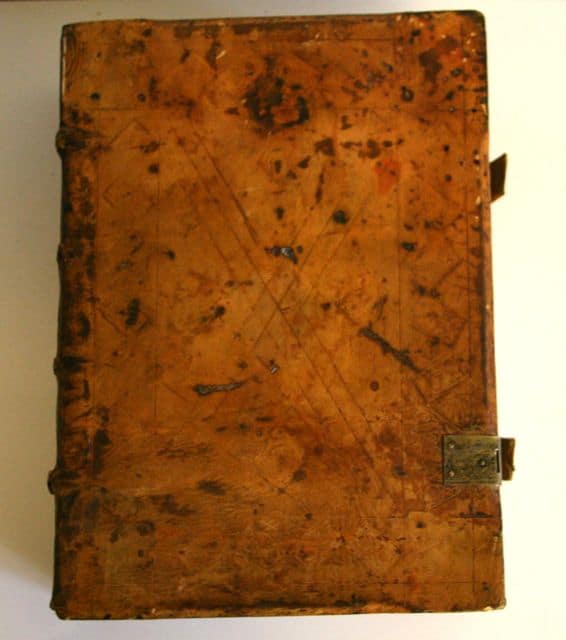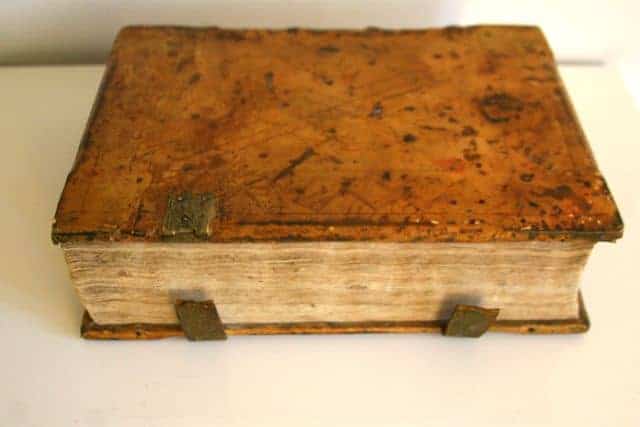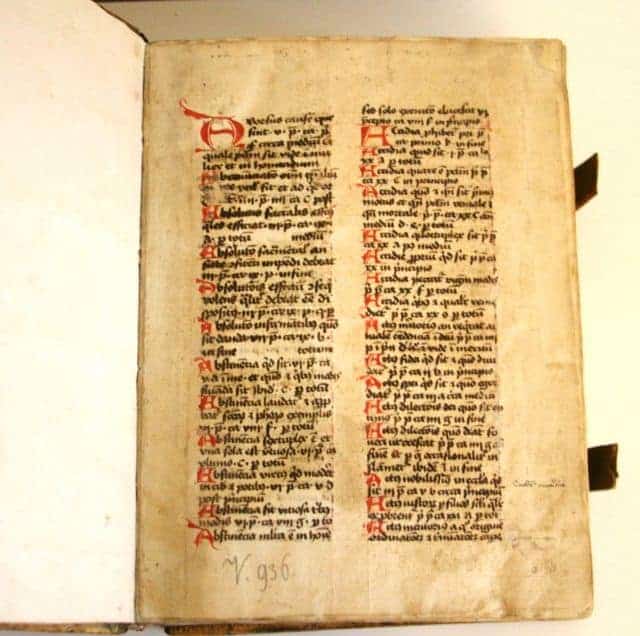April 28, 2011
PRINTED c. 1488-1490 : ONE OF THE EARLIEST PRINTED BOOKS OF ENGLISH LAW
THE EARLIEST PRINTED ABRIDGMENT OF CASE LAW
HIGHLY IMPORTANT ENGLISH PRINTER
Printed in a specially designed “lettre bâtarde”, the semi-cursive that resembled handwritten script
The Incunable:
[Statham, Nicholas ] [Abridgement of law cases, Edward I-Henry VI, in Norman-French] “Accompte.” [Rouen]: Guillaume Le Talleur, for Richard Pynson, [c.1488- 1490] FOLIO. 24 cm., 187 of 190 lvs., lacking a1 and two prelims (more than 1 and 1/2 pages of the missing prelims through the letter “H” have been copied in contemporary manuscript on a single prelim leaf); q1, r4, and v1 partially cut and defective. The old 1956 auction catalog description that accompanies the book, states that it is missing a title page. This is, in fact, not correct for the work was printed without a title page and before they came into general use. Signatures a-y8, z6, preceded by two unsigned leaves (index), the second of which contains the words (at the end of the index): Printed without a date or author’s name; but presumed to have been printed printed at Rouen by Guillaume Le Talleur, for Richard Pynson “Contains and abridgement of cases decided in the courts between the reign Edward I and the end of that of Henry VI.”–British Museum catalog. Per me R. Pynson Printer’s device on verso of last leaf . Circa 17th century calf with expert rebacking and later endpapers, some marginal worming, occasional thumbing and loss to margins, occasional staining. Overall, a very acceptable copy and certainly one of the most complete to appear at auction. Dated about 1488-90 in CIBN, 1490 by Goff. BMC VIII, 390; STC 23238; Goff S-689. [SOLD]
The Work:
“The earliest printed abridgment of the law is that of Statham (Nicholas), who was appointed a baron of the exchequer in the eighth year of the reign of Edward the Fourth (1468). It is a very curious book, printed, as it would seem, before title-pages were in use, for it is without any title-page, or imprint, or date; and the only notice we have of the printer is the following brief and modest remark, at the end of a short table of contents: “Per me, R. Pynson.” It has been conjectured from the type, that it was printed at Rouen, by William Le Tailleur, who printed Littleton’s Tenures, for Pynson. The latter was bred in the service of Caxton, the first printer with metal types in England, and he succeeded his master in the business. Statham’s Abridgment was published between the years 1470 and 1490, and is a remarkable specimen of the typography of the age.” [Story, Joseph The miscellaneous writings: literary, critical, juridical, and political …J. Munroe and company, 1835]
The Printer:
“Richard Pynson (1448 in Normandy – 1529) was one of the first printers of English books. The 500 books he printed were influential in the standardisation of the English language. Pynson, whose books make him technically and typographically the outstanding English printer of his generation, is credited with introducing Roman type to English printing.” [Wikipedia] This was “the first book commissioned by Richard Pynson as he made the transition from glover and bookbinder to publisher and printer” [Bonhams- see below]












